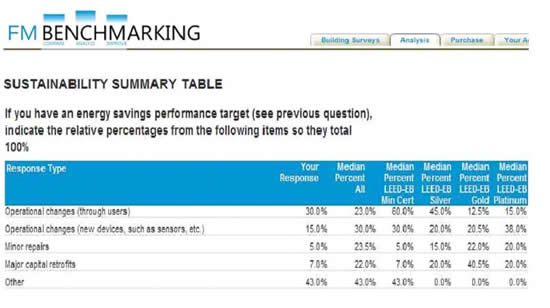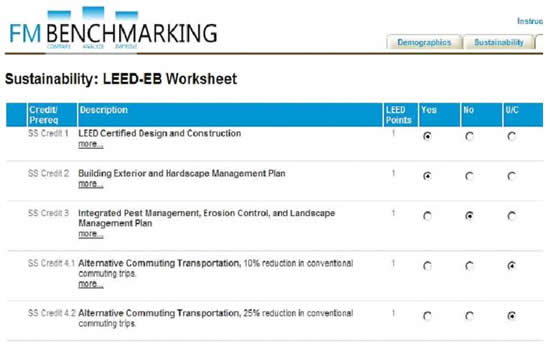It seems as if nearly everyone is concerned about the environment, global warming, or maybe just the rising cost of energy as utilities work thru how to produce cleaner power.
If you haven’t been asked about your “building sustainability” plans or where your facilities are on the “carbon footprint” scale yet, it is highly likely someone in senior management will ask soon. One approach would be to hire a LEED (Leadership in Energy and Environmental Design) consultant to analyze your facilities and prepare reports for all of them. You would quickly find out the cost of this approach is very prohibitive; while it may be necessary, there are other actions you might consider taking first.
One such approach would be first to self-analyze your facilities using Web-based tools that would provide you with a preliminary LEED-EB rating. This would help you assess how well your facilities are performing with regard to sustainability, and help prioritize those buildings where you want to obtain LEED certification. An essential component of a sustainability tool would be to show how implementation of certain LEED criteria affects total operating costs.
An example of such a tool is FM BENCHMARKING, which has both a costs and a sustainability component. We will use FM BENCHMARKING to demonstrate how such a Web-based tool can help you reduce your building’s carbon footprint and determine whether professional consulting expertise may be a direction from which you would benefit.
FM BENCHMARKING — Sustainability
Participants in the survey are asked to indicate if they have an energy savings performance target and what changes they plan to implement to achieve it.

The report output shows your responses and how others intend to achieve their energy savings targets

Notice in the example above that organizations with Gold or Platinum LEED certifications will be achieving their savings primarily from operational changes, while organizations with minimum certifications will be achieving their savings through their users.
The FM BENCHMARKING sustainability survey provides the ability to track LEED-EB points in a manner similar to the LEED-EB survey but in an easy to follow format. In the example below, we have shown a few questions from the Sustainability section from the LEED-EB survey. Answer options are:
- Yes — Implemented
- No — Not implemented
- UC — Under Consideration

By clicking on Credit 4.1, Alternative Commuting Transportation, one will see photos providing options or ideas on what the USGBC (U.S. Green Building Council) intends for this item, as in the screen shot below:

After you have completed the various sections, an overall score is developed showing your ranking on the USGBC LEED-EB certification scale.

Notice that for this facility the current LEED-EB score is 37 which is in the green zone for minimum levels of certification. However, if all the items under consideration were implemented, then the LEED-EB score would be 44 which would put the facility in the range for a silver rating.
This is a very effective tool for:
- Reporting on the current performance
- Identifying what items to work on
- Tracking your progress
- Prioritizing your work for LEED certification
Once you have identified where you fall short in terms of sustainability initiatives with regard to LEED-EB, you then can see which sustainability initiatives others tended to implement. For example, if you find that over 80% of buildings similar to yours have implemented an initiative, you may consider implementing it as well.
Once know which initiatives you may want to pursue, if you are unsure as to which would be most effective to implement first, a consultant can help you prioritize your action plan. By conducting the benchmarking first, your conversations with your consultant will be much more productive.
The above example used LEED-EB as a basis for measurement; similar results may be obtained with most other such certification and sustainability measurement tools, including ENERGY STAR.
More information about FM BENCHMARKING may be found at www.FMBENCHMARKING.com, including a free demonstration tool where you can input your facility data and see some benchmarking results.